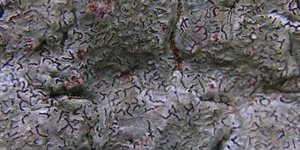Sticta sylvatica
Spotting in the Field
Once the range of variation in the Sticta fuliginosa s. lat. group is understood, separating out Sticta sylvatica becomes much easier. The regular dichotomous branching and the colour are quite distinctive.Young Thalli
The younger thalli lacking well developed and regular dichotomous branching are a bit less distinct. However, the beginnings of this thallus shape are evident in younger material and the the dark brown glossy upper surface is always present, but best seen when dry.Mature Thalli
The mature thalli have very distinct regular dichotomous branching, but also are darker brown on the upper sides than any taxa in Sticta fuliginosa s. lat. When dry, the tan to dark brown glossy upper surface is very characteristic, often with shallowly reticulated ridges, which are more marked than in Sticta fuliginosa s. lat. The under side on larger specimens is also jet back near the base, a feature never seen in Sticta fuliginosa s. lat. Sticta atlantica is the closest species in the Sticta fuliginosa s. lat. group in appearance but this has the isidia strongly clumped on swellings on the upper surface. It also has much sparser tomentum on the under side, with the momentum looking like rhizines.Summary
The main features are:- Regular dichotomous branching.
- The upper surface dark brown glossy when dry, with shallowly reticulated ridges, but not maculate.
- The under surface jet back at the base.
Sticta sylvatica pictures



